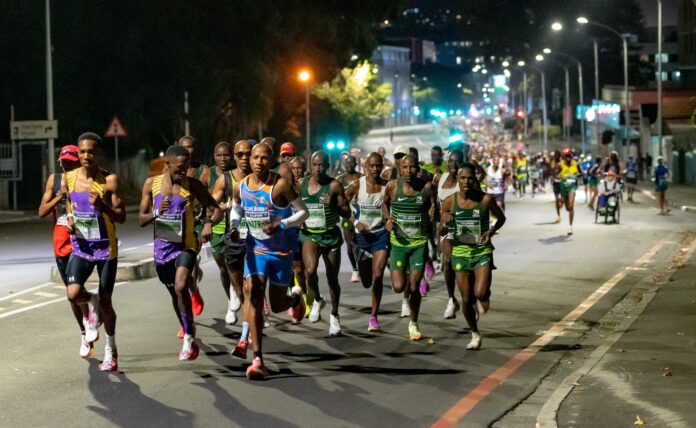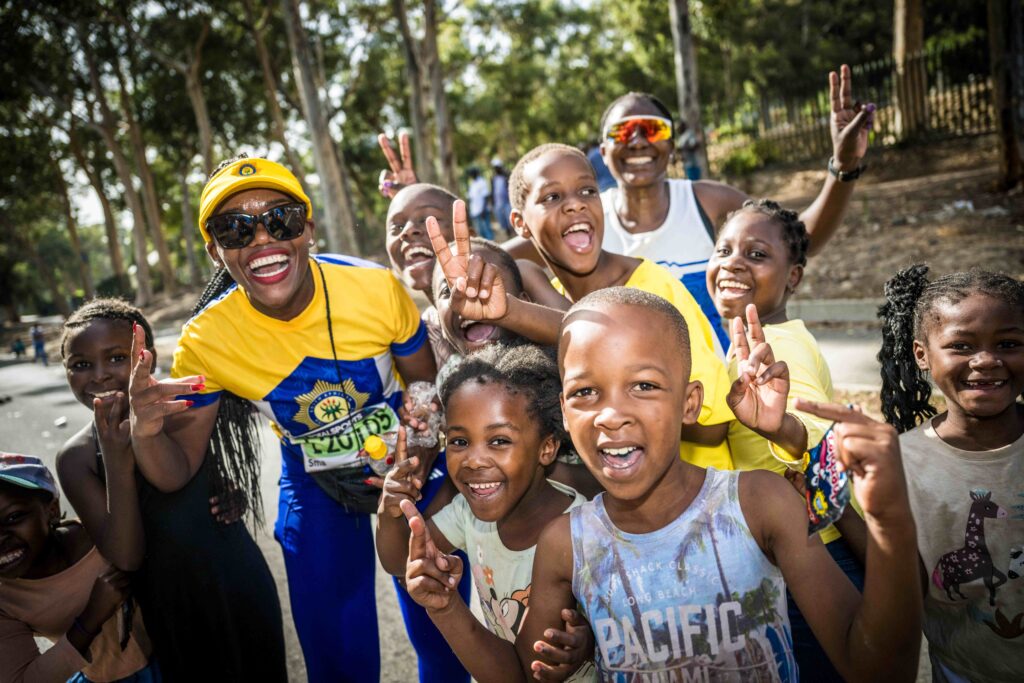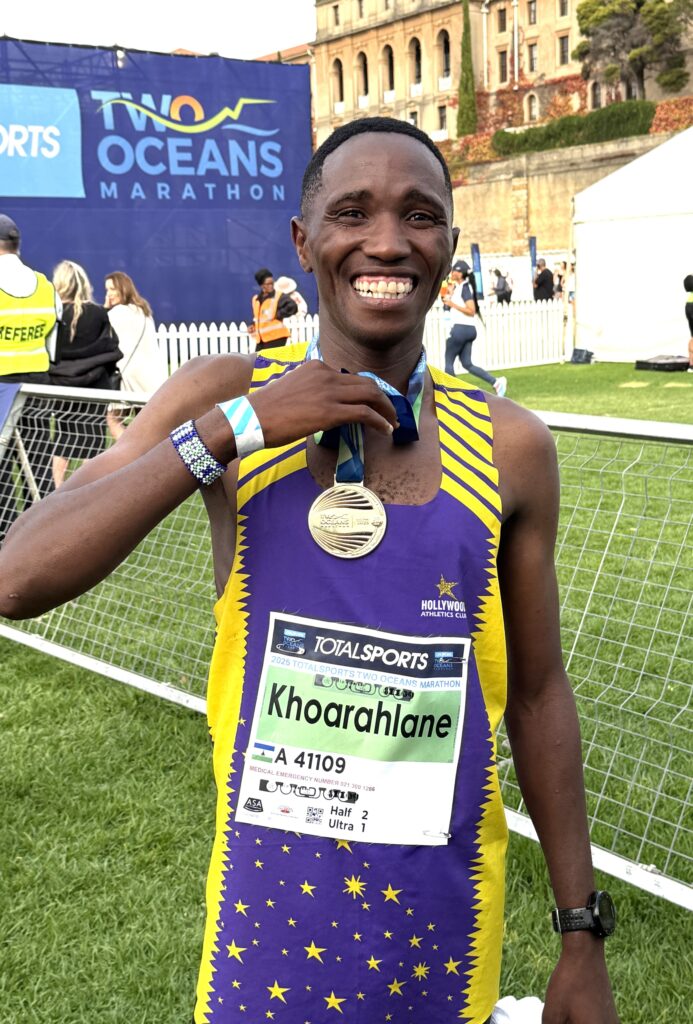
Gerda Steyn, Khoarahlane Seutloali, William Kaptein and Mercy Jebet stole the headlines, but thousands will claim part ownership of the 54th edition of the Totalsports Two Oceans Marathon, which took place in Cape Town over the weekend.
Thirty thousand runners from no fewer than 87 countries took part in the International Friendship Run, the Long and Short Trail Races, the Half Marathon and the 56km Ultra-marathon, making the Two Oceans a true celebration of international unity at a time when it is most needed.

The Two Oceans is one of Cape Town’s biggest community participation events. And while other sporting events have also rocked the City, they mostly lack the deep history of the Two Oceans, which year on year brings out spectators in their thousands along the route.
Race organisers will concede that they are still striving to regain the mantle of organisational excellence which marked the ‘World’s Most Beautiful Marathon’ as the continent’s best road race in the past and looking to iron out some of the of the ripples which impacted the weekend.

But the hundreds of businesses which increased their exposure through the EXPO, thousands of runners who shared happy ‘war stories’ after their race, tens of thousands of cheering spectators along the route from communities as diverse as Constantia and Imizamo Yethu and hundreds of thousands at home and abroad who watched the live television broadcast showcasing the best of Cape Town will mostly attest that, while the Oceans may be short of peak performance, the product remains attractive.
The quality of the Two Oceans Half-Marathon field, while not at heights achieved several years ago, was significantly up on that of last year’s race in the men’s competition, with the field including past record-holders and national champions. And William Kaptein’s Half Marathon victory, the first local win since Makhosonke Fika’s in the inaugural race in 1998, was a spectator highlight.

But it was the 56km which really sparkled, with the men’s competition one of the best ever. When last, if ever, were four athletes still together and in contention for line honours less than 3km from the finish? And while the breakaway ‘TV’ runner is a common occurrence in the early stages of high-profile races, that serious competitors of the calibre of Stephen Mokoka and Nkosikhona Mhlakwana led the race early on was a welcome change to previous race patterns.
Intriguingly, the overall winning time has remained remarkably consistent in recent years, irrespective of conditions and tactics, with winners in the last decade typically finishing less than a minute on either side of the 3 hrs 09 min 40 sec golden mean.

With the exception of the 2016 outlier when strong winds on Chapman’s Peak turned the race into a tactical battle and Zimbabwean, Mike Fokoroni, won in 3:13:33, the winning times for the past ten races are within two minutes of each other, ranging from Bongmusa Mthembu’s 2:08:40 in 2019 to Khoarahlane Seutlaoli’s 2:10:46, set this year in warm and humid conditions.
In comparison, Lesotho legend Vincent Rakabaele’s win in 2:08:56 in 1979 heralded a decade with a much wider range of winning times – almost 11 minutes separated Thomson Magawana’s 3:03:44 in 1988 and Hoseah Tjale’s 3:14:30 in 1980.
While Gerda Steyn and Irvette van Zyl have both run under Frith van der Merwe’s long standing previous record on a number of occasions, the men have failed to threaten Thompson Magawana’s 3:03:44 set in 1988.
Three leading coaches shared their ideas of why is this so and what it would take for winning times to again drop well below the ‘golden mean’?
Coach of Two Oceans 56km Champion, Khoarahlane Seutloali and third-placed woman Neheng Khatala, Andrew Booyens, believes the depth of competition in the men’s field is a factor.
“Oceans is always special, and this year’s race had its own challenges — the humidity was a big factor,” reflected Booyens. “The early pace was quicker than usual but it definitely took a toll later on. What’s interesting is how winning times have stayed so consistent recently, regardless of weather, shoes, or tactics.
“In the men’s race, the depth of competition is a big reason why the race often becomes tactical. No one wants to do the work upfront and become a pace marker for the main contenders,” Booyens continued. “It’s too risky when the field is so strong and tightly matched. So even when conditions suggest a faster time is possible, the dynamics often prevent it.”
One of South Africa’s top distance athletes and winner of the New York Marathon, Hendrick Ramaala, now coaches many of South Africa’s leading athletes, including this year’s runner-up in the ultra-marathon, Siboniso Sikhakhane, and 6th placed finisher in the women’s race, Zimbabwean Nobuhle Tshuma. He believes athletes lack incentive to run faster times.
“Currently winning is everything,” said Ramaala. “The time does not matter – the financial incentive (R250 000) is for first prize. The record incentive is perceived to be unattainable.
“Putting up time incentives to run faster than, say, 3:09 and 3:06 would likely lead to faster times, which would mean bigger stories – good for the race profile. When Gerda broke the thirty-year record, that was huge!”
External factors also play a role, argues Booyens. “To get back to a 3:05–3:06, you’d need perfect conditions — cool and low humidity — and a deep front group with someone brave enough to push hard after 42 km. But that takes a rare athlete and a lot of trust in your preparation.”
Ramaala thinks that Stephen Mokoka could be that athlete. “He is a 2:06 marathoner and could easily run through the marathon mark in around 2:18 without difficulty (this year they went through in 2:24:30). He started out faster this year but then slowed and allowed the pack to catch him. I don’t know why he did that.
“By changing your pace you are more likely to cramp than by going out faster and running more consistently,” Ramaala added.
He also believes that the changing climate of international competition played a significant role. “When Magawana set the record, he was one of South Africa’s leading marathoners, but he was unable to race overseas because of South Africa’s isolation under apartheid.
“Our top marathoners now seek greener pastures overseas, only returning to race Two Oceans and potentially Comrades when they’ve past their peak.”
Coach to leading Hollywood athletes, Nkosikhona Mhlakwana and Lindelani Mjwara, Prodigal Khumalo, agrees that win-at-all-costs tactics and weather influence winning times, but adds another factor. “Drinking water from cups also is a main culprit of slower times – you see runners dropping their pace at every water station.”


